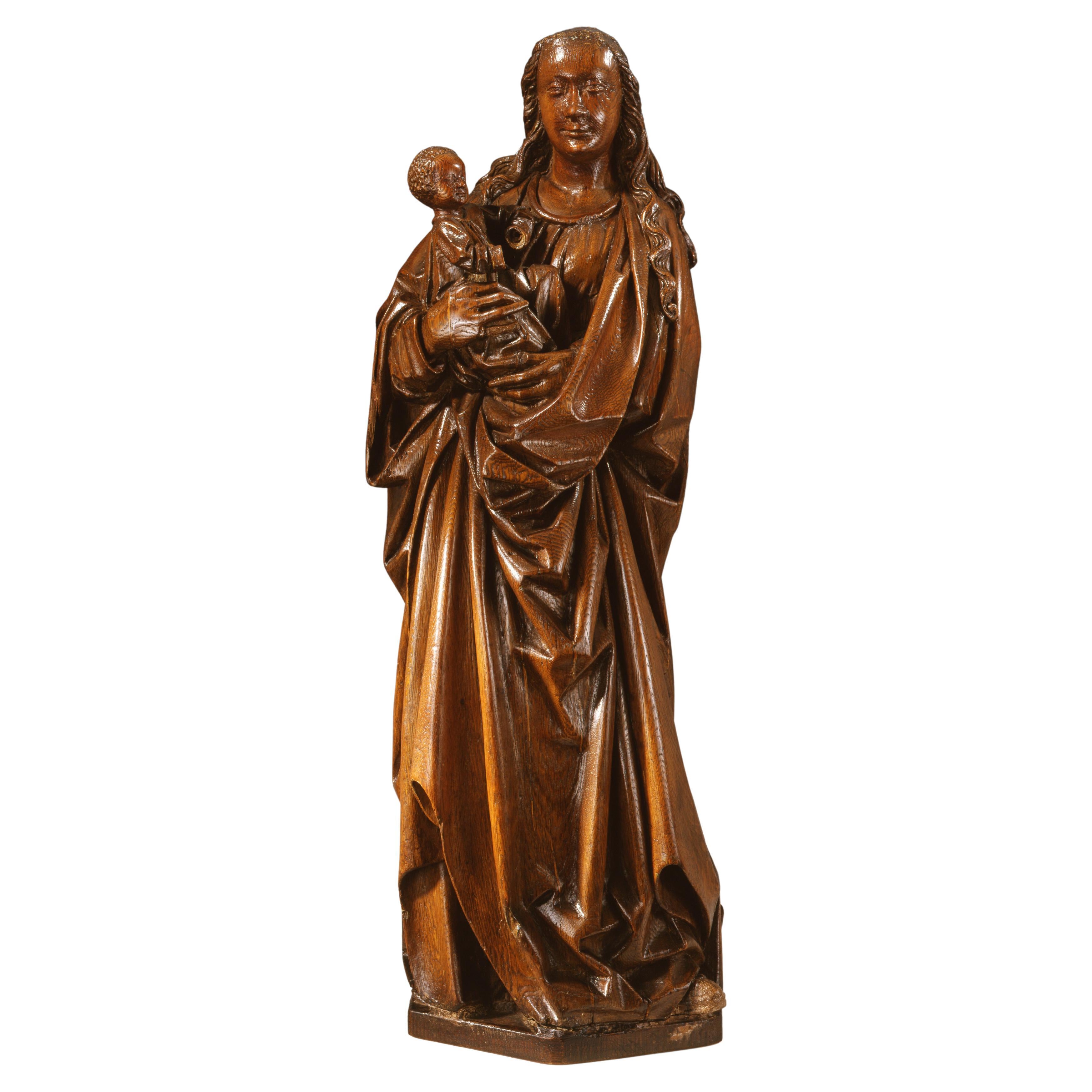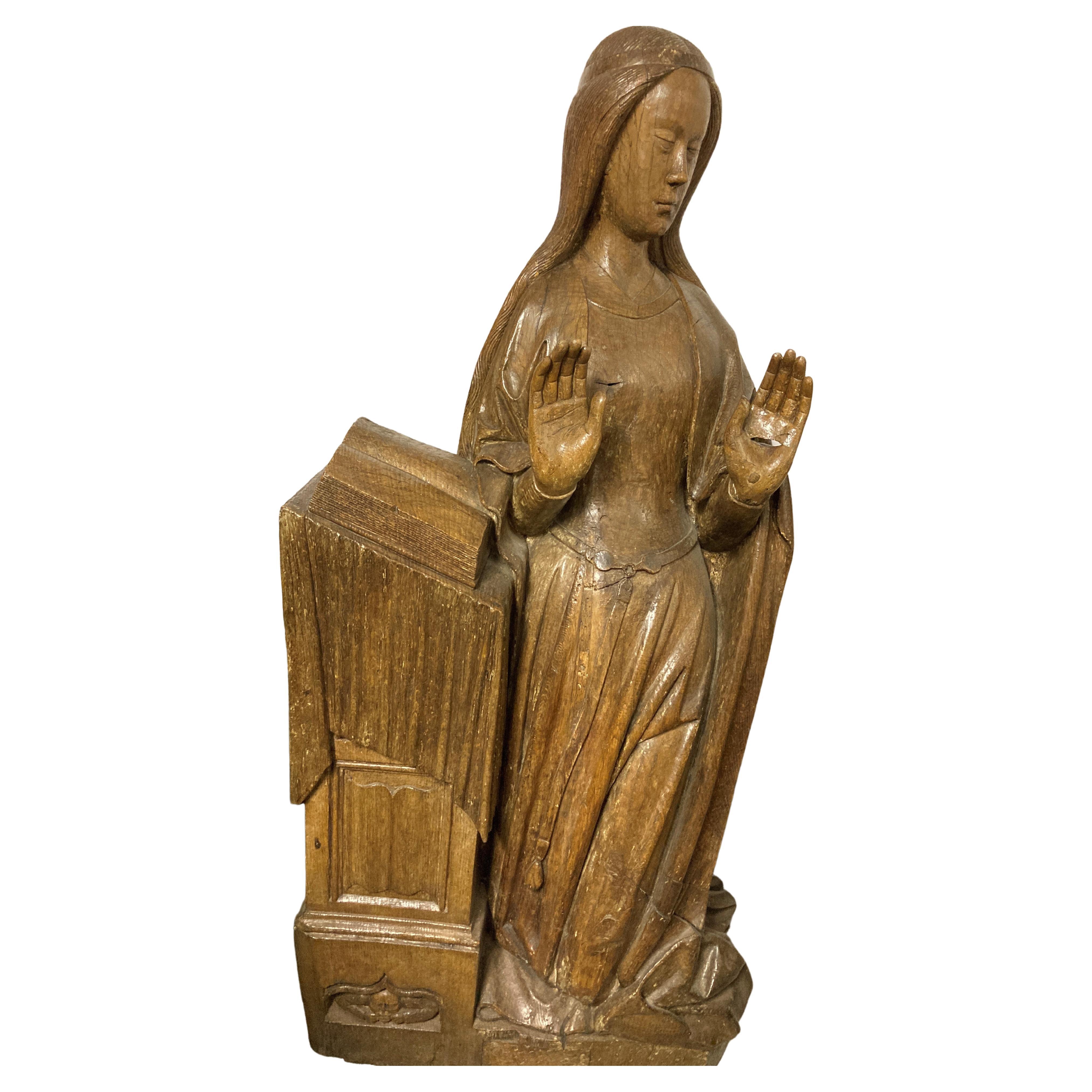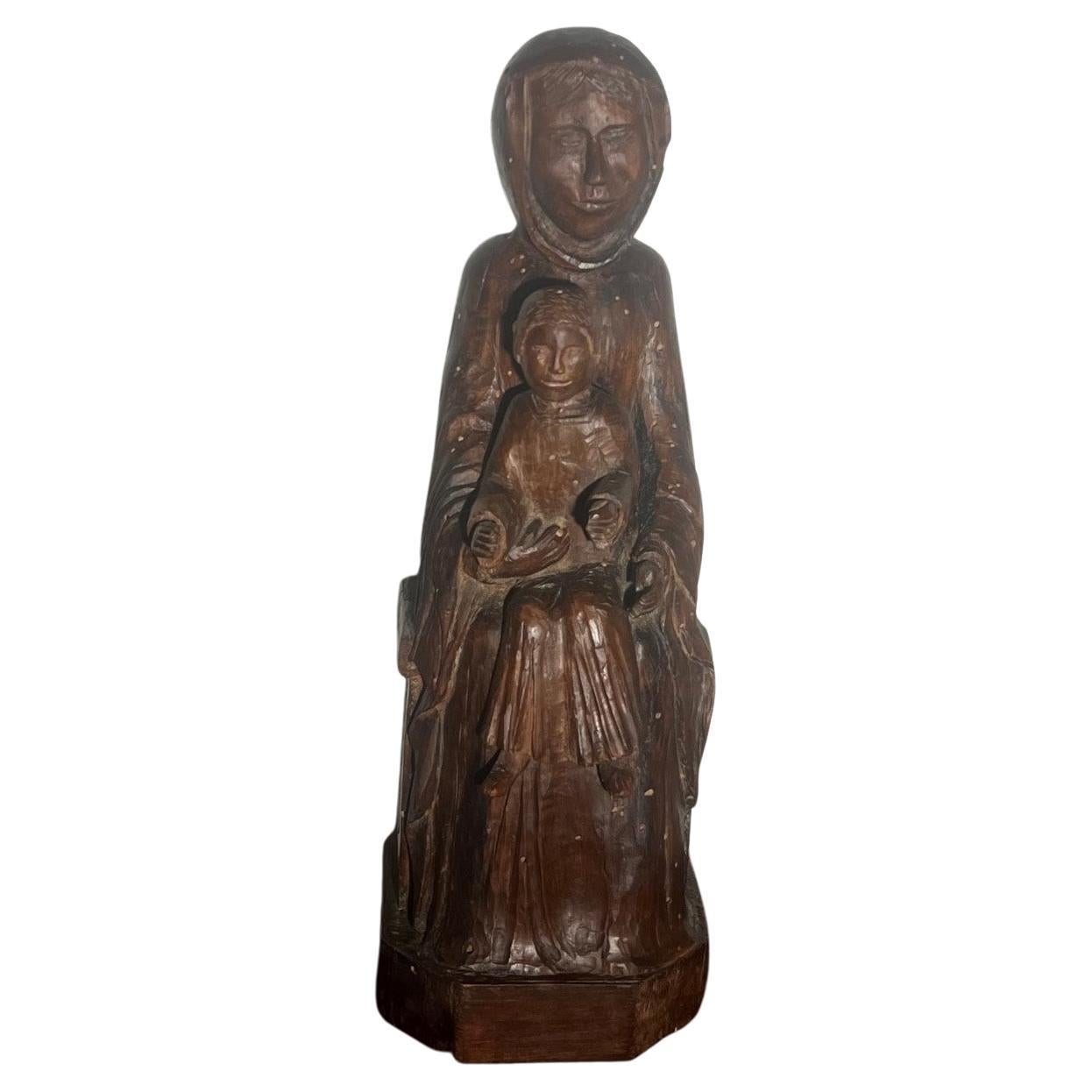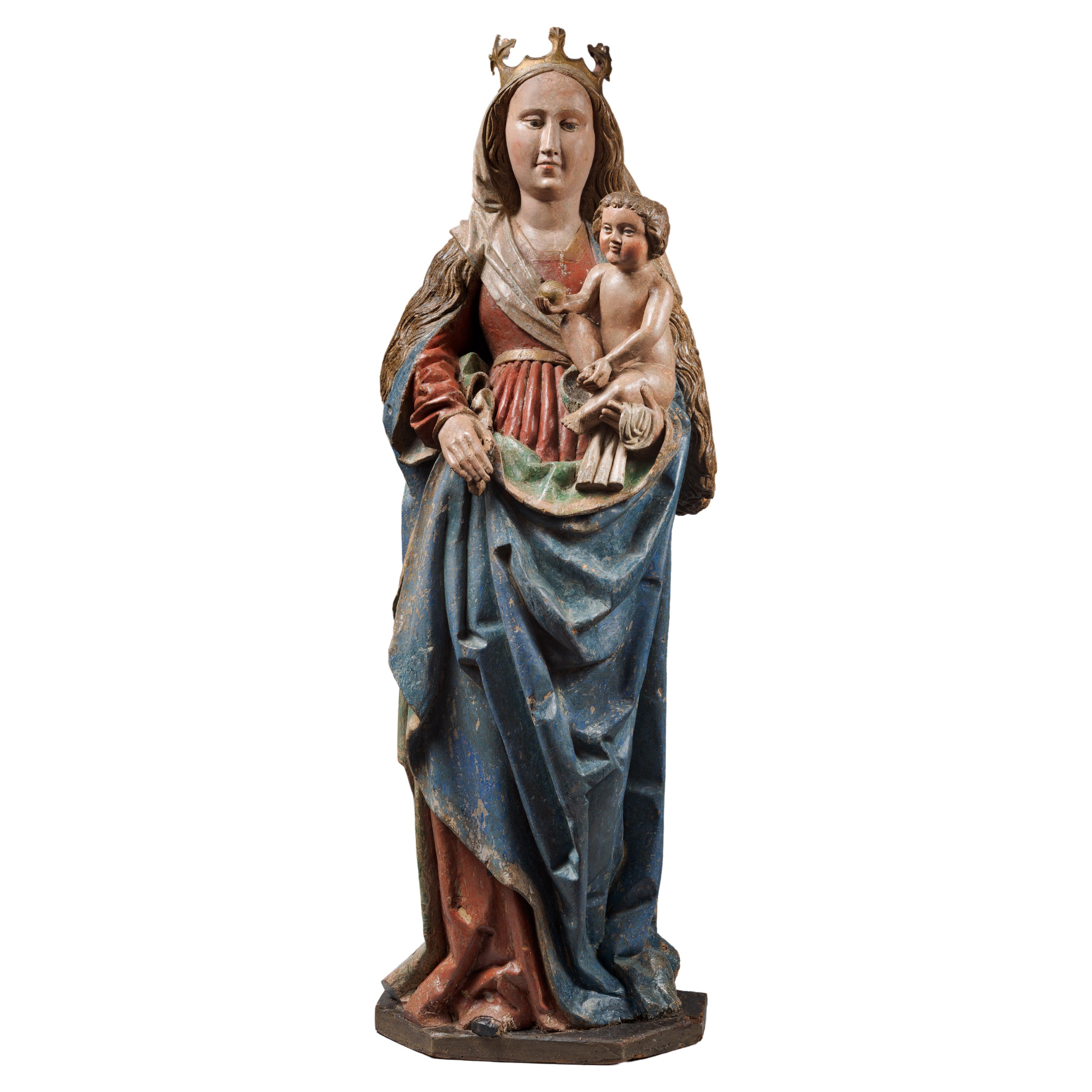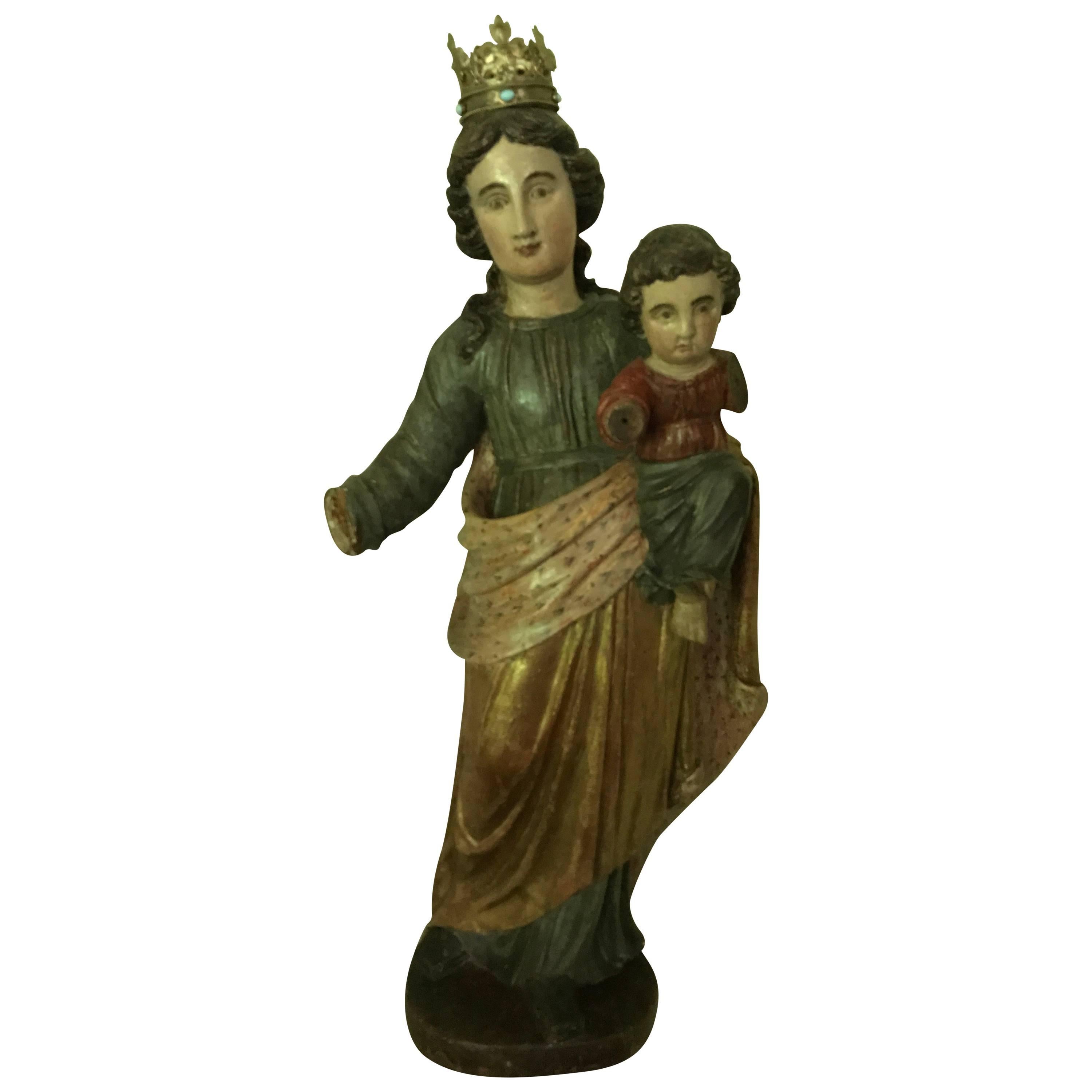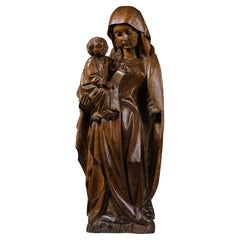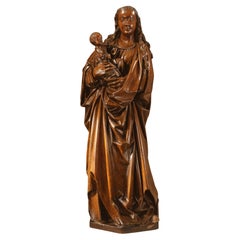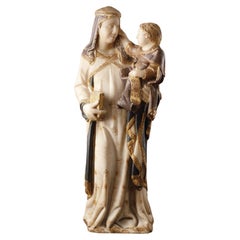
Gothic Polychrome Limewood Group of the Virgin and Child
View Similar Items
1 of 4
Gothic Polychrome Limewood Group of the Virgin and Child
About the Item
You May Also Like
- Gothic Virgin and Child with a PhylacteryLocated in Saint-Ouen, FRThis Virgin and Child is wearing clothes with a limited number of folds and showing a thickness characteristic of the Burgundy region. As a result of the presence in the region of th...Category
Antique 15th Century and Earlier French Gothic Figurative Sculptures
MaterialsWalnut
- Gothic Virgin and Child from FlandersLocated in Saint-Ouen, FRExhibition Museum Cantini, 1952, The art of the Middle Ages in the Marseille collections, n°101 Provenance Former collection Louis Bresset (before 1952) Former collection Profe...Category
Antique 15th Century and Earlier Dutch Gothic Figurative Sculptures
MaterialsOak
- A Polychrome and Parcel-Gilt Marble Group of the Virgin and ChildLocated in London, GBA Polychrome and Parcel-Gilt Marble Group of the Virgin and Child Attributed to Giovanni Di Balduccio (1317 - 1349) Marble Italy Circa 1330 - 1340 SIZE: 65cm high, 28cm wide - 25½ i...Category
Antique 15th Century and Earlier Italian Figurative Sculptures
MaterialsMarble
- Polychrome carved wood Virgin and Child from the 15th CenturyLocated in Saint-Ouen, FRPOLYCHROME CARVED WOOD VIRGIN AND CHILD FROM THE 15TH CENTURY ORIGIN: SOUTH GERMANY, SWABIA, NUREMBERG REGION PERIOD: 15th CENTURY Height: 94,6cm Width : 28 cm Depth : 18 cm Lime wood Original Polychromy Good state of conservation From 1430 onwards, sculpture underwent a profound stylistic renewal which continued until 1530, the so-called late Gothic period. In the Germanic countries, original sculptures flourished in an expressive and sensitive vein. This renewal was inspired by the art of Nicholas of Leiden, who was active in Strasbourg in the 1460's. His style broke with the refined and delicate art of the international Gothic style in force throughout Europe around 1400. The figures became more authentic and realistic. The bodies became denser. Clothes are animated by deep, broken folds, the fabrics are heavy and have a great decorative value. In addition, the polychromy is intended to be illusionistic. The painting makes it possible to restore the texture of the materials, the richness of the textiles and the natural skin tone of the characters. The dissemination of images through engraving and the great mobility of the artists led to the success of this style, which conquered the Upper Rhine, Swabian, Tyrolean and Franconian regions, contributing to the formation of a common stylistic identity in these regions. The economic boom in the flourishing German cities was conducive to the development of original production. Attracted by this prosperity, numerous workshops were set up in order to meet the orders of religious communities, the Church and the laity, including a clientele of middle-class rockers. This precious Virgin and Child is depicted standing on a crescent moon, her head encircled by a crown of tall flowers. Her long wavy hair spreads over her shoulders, framing her beautiful oval face. Under fine eyebrows drawn with a brushstroke, her almond-shaped, slightly drooping eyes look at the Child with infinite softness. She is dressed in a long red dress with a rounded neckline, belted under the chest. The heavy fabric of her dress spreads out in broken folds at her feet. On her shoulders she wears a golden cloak. The drapery has deep folds. She holds out her right hand while she holds the Christ Child with her left. Christ, with his well-defined hair, is naked. His cheeks are highlighted with red, he holds an apple in his left hand and with the other hand makes a sign of blessing towards the faithful. Virgins with Child on a crescent moon were very popular in the second half of the 15th century, especially as the central subject of altarpieces in southern Germany and Austria. The crescent moon on which Mary is standing is reminiscent of the Woman of the Apocalypse. Often equated with the Virgin Mary. This episode is taken from the Book of Revelation (12:1-6) 1 Then a great sign appeared in heaven: a woman clothed with the sun, with the moon under her feet and a crown of twelve stars on her head. ; 2 She was pregnant, and she cried out because she was in labor, in pain from giving birth. ; 3 Then another sign appeared in heaven: it was a great fiery red dragon, with seven heads and ten horns, and seven royal crowns on his heads. ; 4 His tail swept down a third of heaven's stars and threw them to the earth. The dragon stood in front of the woman who was about to give birth so that when she gave birth, he might devour her child. ; 5 She gave birth to a son, a male child who is to rule all the nations with an iron rod. Her child was snatched up to God and his throne. ; 6 Then the woman fled into the desert, where God has prepared a place for her. There she will be taken care of for one thousand two hundred sixty days. Some theologians see in this woman a reference to the Virgin Mary and in the child, Jesus. This remarkable work is a very fine example of sculpture from Swabian workshops in the last decades of the 15th century. It presents all the characteristic stylistic elements: a highly girdled silhouette, an abundant drapery with angular folds, but also a great physical presence accentuated by the polychromy that restores the anatomical details. This group is made of a wooden log. The deep folds of the drapery highlight the movement of the Virgin holding the child. Bibliography : Sophie Guillot de Suduiraut, Dévotion et Séduction, Sculptures souabes des musées de France, vers 1460-1530, Paris musée du Louvre-Éditions somogy, 2015 “Revelation 12 - Common English Bible...Category
Antique 15th Century and Earlier German Gothic Figurative Sculptures
MaterialsWood
- 15th Century Spanish Gothic Virgin and Child Polychrome Wooden SculptureLocated in Marbella, ES15th century Spanish Gothic Virgin and child polychrome figurative wooden sculpture.Category
Antique 15th Century and Earlier Religious Items
MaterialsWood
- Gothic Carved Oak Statue – Virgin of the AnnunciationLocated in Maidstone, GB15th Century Oak Wood Sculpture of the Virgin of the Annunciation beside a lectern supporting an opened book, the Virgin with both hands upraised ( one repaired) turning slightly to the left, her demeanour redolent of strength, compassion and benignity. Franco Flemish origin, circa 1480, 56 inches in height x 26 inches wide. Provenance : Lot 347, The Notable Art Collection, New York, April 1949, Joseph Brummer Collection Part 1Category
Antique 15th Century and Earlier Belgian Gothic Figurative Sculptures
MaterialsOak

